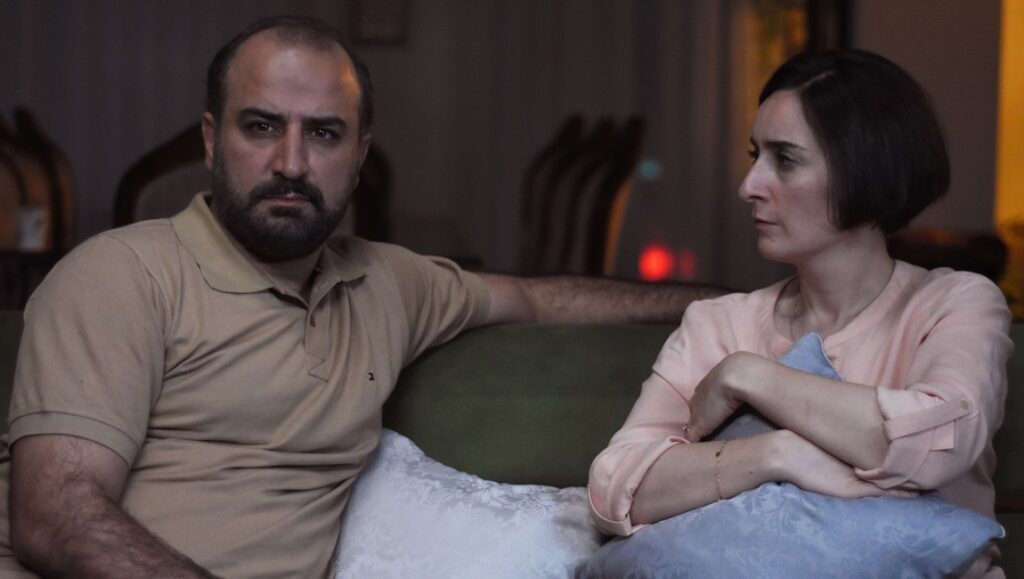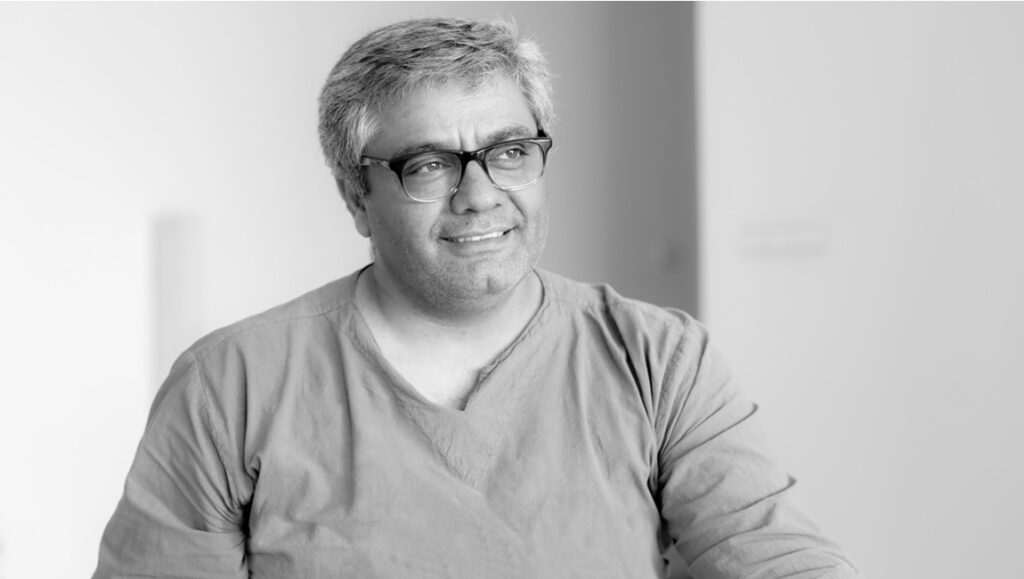On September 13, 2022, Masha Amini, a young 22-year-old girl was arrested by the Iranian religious morality police for allegedly not wearing her hijab in accordance with government standards. Only three days later it was announced by authorities that she died because of a heart attack, something that immediately raised doubts and was denied by some women who were detained with Masha Amini and witnessed what happened to her. They stated that she was brutally assaulted by the police, and later some leaked medical scans showed the real cause of death was a cerebral hemorrhage caused by the harsh beatings. A series of protests and demonstrations against the authorities began only a couple hours after the tragic event, using the slogan “Woman, Life, Freedom.“ Several Iranian artists joined the protests or offered their support through social media; Taraneh Alidoosti was one of the first names that joined the cause, but she was arrested after a short time and detained for three weeks in prison, sparking even more controversy. Directors Jafar Panahi, Mostafa Al-Ahmad, and Mohammad Rasoulof followed suit and were also arrested for showing their support to the women’s movement by signing the “Lay Down Your Arms” petition, calling on security forces to exercise restraint in relation to popular protests. The three renowned filmmakers had to spend six months in Evin Prison, a period during which Rasoulof met several young people who shared with him the details of other political protests and how these were brutally repressed by the authorities.
During the months following this, Rasoulof shot his new movie, The Seed of the Sacred Fig, and after it was selected to compete In Competition at the Cannes Film Festival last April, his lawyer divulged that the filmmaker had been sentenced to eight years in prison and lashes just before his Cannes departure. Less than a week later, Rasoulof issued a statement in which he condemned once again the tyrannical and oppressive regime, announced that he had fled Iran, and in May he was able to attend the premiere on the Croisette. The Seed of the Sacred Fig tells a story closely related to the events of 2022, in which the filmmaker analyzes the dynamics of a family of four after the father, Iman (Misagh Zare), gets promoted to the position of investigating judge in the Revolutionary Court in Teheran. The burden of his job and the nationwide political protests creates a fragile and tense atmosphere inside the family unit, and after the disappearance of his gun, Iman’s paranoia grows to the point that he begins to suspect his own wife, Najmeh (Sheila Golestani), and two daughters, Rezvan (Setareh Maleki) and Sana (Masha Rostami), of the theft, imposing strict measures at home until he finds the truth.
At the 2024 Locarno Film Festival, I sat down with Rasoulof to talk about the complex dynamics of love and power in Iran, the contrast between the older and younger generation, and the parallels between the film and the real-life events they reflect.
Omar Franini: I would like to start this interview by asking you how are you doing after this tough period that preceded the premiere in Cannes. How did you feel presenting the movie in Piazza Grande? I also wanted to ask you about the rest of the crew that is still in Iran, especially Misagh Zare and Soheila Golestani, two of the main actors of your movie. Are you constantly in touch with them?
Mohammad Rasoulof: Of course — I’m in touch with them all the time. I sent them some videos to show them the big screen of Piazza Grande. They’re incredibly strong. I understand them well because I’ve been in a similar situation myself, but the last time was seven years ago. When the regime does everything it can to create problems in your daily life, it does turn your daily life into sort of long torture in order to stop you from [doing] what you want to do. All I can say is that, yes, they have all my respect and admiration. And, of course, I’m also in touch with the crew that is no longer in Iran.
OF: Recently, there was an election in Iran. How do you think the situation will change?
MF: You know, the president in Iran doesn’t mean anything, and so it can’t be taken as a symbol of any significant sense. I think it’s just a sort of — how can I say — a trick in a way, played by the Islamic Republic in order to try and survive a bit longer. They’ve done it before. There was no change [in] confusing people and then making them believe that there will be some change. So yeah, I just think they’re acting deceitfully, as usual.
OF: My next question is about the title of the movie. If I understand correctly, it refers to a plant that survives by sort of killing the other plants. So I was wondering if you could tell me more about the metaphor behind this title.
MR: The title, and the plant itself, symbolizes the fact that tradition is ready to do anything. Even do the dirtiest things in order to preserve the root of their mentality.
OF: In The Seed of the Sacred Fig, we can see a contrast between two different generations: the youthful point of view of the two daughters and their friend Sadaf, and the more traditional one of the parents. Do you think the younger generation could bring a real change to Iranian society? I’m asking you this also because recently the music of the rapper Toomaj Salehi, whose lyrics have been condemned by the regime, has had an influence on younger people after the events of 2022.
MR: So this contradiction, or contrast as you said, has a sort of long history in Iran that goes back at least 100 or 150 years, and the imbalance of power kept shifting in between the group that wanted to set a more traditional way of thinking and the group that wanted modernity. And obviously, from the 1979 revolution and the referendum that marked the victory of tradition, the traditionalists and the fundamentalists have kept the power in their hands. But what’s interesting now about the young generation is that their fight is different, because in a way, they are rejecting the violence and the abuse of the authorities. And so they want to break this sort of sick cycle of violence that keeps engendering new violence.

OF: I noticed that almost every time we see Iman on the screen, there’s a color associated with him, especially green and red, two colors that have a specific meaning in the Islamic culture. At first, the green prevails, but as the movie goes on, the presence of red becomes more constant. Maybe I’m overthinking it, but is there any meaning behind the choice of this specific use of colors?
MR: It’s a very interesting point because in the case of the color palette, this is based on the truth in a way. We used a lot of green for Iman because it’s a very important color in Iran. It’s associated with religion, so we have a color for it. For instance, in the shrine you see at the beginning of the film and later on, there’s that green that we call Sabz Sayyid. It means the green of the Sayyid, who are the descendants of the Prophet. So, yes, it is a color that is strongly associated with that group in Iran, and at the same time it kind of is the color of Iman. But then when the emotional temperature and the set of struggle in the film rises, we used a lot of reds. So we kind of worked on it constantly with the set designer and also with the costume designer, but we never tried to distance ourselves from reality or to use it in a symbolic way — we didn’t want to use it symbolically, but we wanted to use it functionally, in a way that is very close to reality.
OF: In the second half of the movie, there’s a shift in genre and it becomes more of a thriller than a socio-political drama. I was wondering if there was a motivation behind this form change.
MR: So the form is the result of the needs and the feelings I had at the time. I’ll go back to that. But basically, I’m a very curious and experimental person and filmmaker. I like to change the form in my movies and work with what I don’t know. And then, I must confess that I really wasn’t sure that even just the filming itself would ever reach completion — that I’d be arrested before and so on. I told to myself something like, “you’re about to go back to jail, so you’ve got nothing to lose. Do whatever you want with this film.” So I acted very instinctively, and what you see is the result of that impulse. I think someone in my circumstances should have been a bit more careful and conservative in their approach. But I really decided to only listen to my heart and do what I felt was right without any fear.
OF: In the last part, there’s a specific sequence where Sana, the younger daughter, is in the woods and is trying to use these speakers to put on some old family recordings to get to the heart of the father. But nothing can reach him anymore, as if Iman will never go back to being this sort of loving parent and husband. Could you give me more insight on what you were trying to say with that?
MR: You know, love can mean different things to different people. I know couples in Iran where the husband beats the wife because the wife maybe has spoken to another man, and the wife is convinced that the husband beats her because he loves her. So what is love? At the same time, we have stories in Iran, true stories of revolutionaries from the 1979 revolution, who sort of denounced and had their own children executed in the name of an ideology. And we don’t just need to look at Iran only; let’s look at Abrahamic religions. We’ve got the sacrifice of Isaac in the name of God to prove the father’s love and devotion to God. So fathers killing their children has quite ancient roots, and certainly throughout the Abrahamic cultures.
OF: I would like to shift my focus to the last sequence, the one set in these ruins. Is there any metaphorical meaning behind this location, especially in the maze that these ruins form. Does that symbolize the constant abuse perpetrated by the Regime toward women and young people?
MR: Not necessarily. In the sense that I think totalitarianism goes way beyond it, it is much greater than the Islamic Republic, but is also much older in Iran, and that really is the main thing — [that struggle] that we see in this scene and throughout the film. But, of course, at the end what we’re left with is the image of an ancient, destroyed, and beautiful Iran.


Comments are closed.